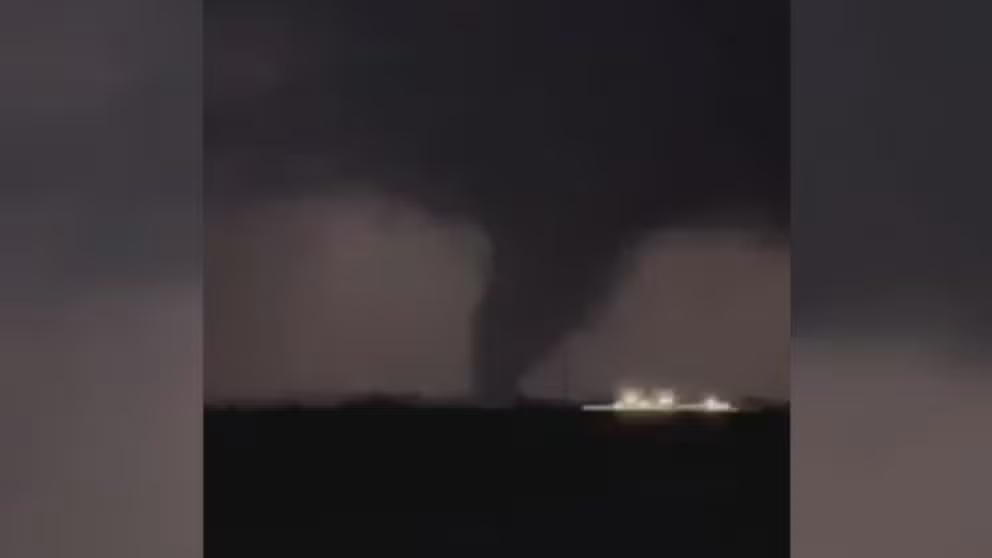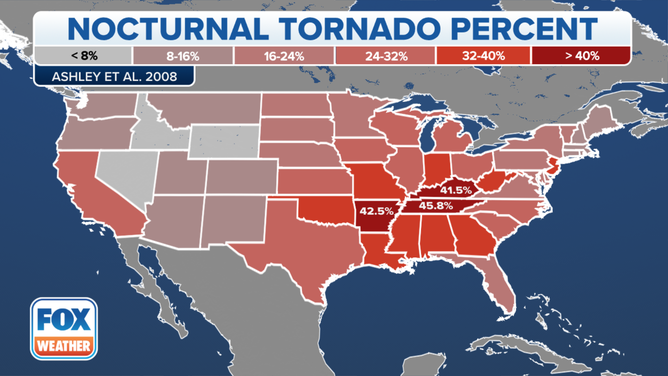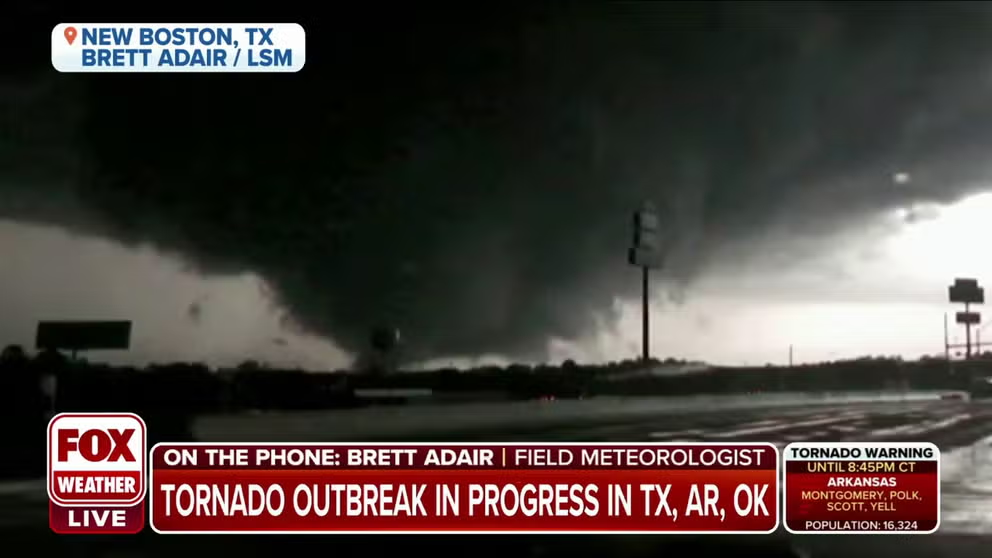Nighttime tornadoes: How you can stay safe from dangerous, nocturnal twisters
The dark of night often hides tornadoes, making evening twisters deadlier than those that occur in the daytime. Nighttime also means residents are more likely to be asleep during a storm, potentially missing crucial warnings.
Why are nighttime tornadoes far more likely to turn deadly?
Tornadoes at any time of day can cause mass amounts of destruction, but tornadoes in the dark are far more likely to turn deadly.
Tornadoes that happen at night are more than twice as likely to result in deaths than tornadoes that occur during the day.
One study found that about one in every 20 nighttime tornadoes turned deadly, compared to about one in every 50 daytime tornadoes.
Why nighttime tornadoes are deadlier than daytime tornadoes
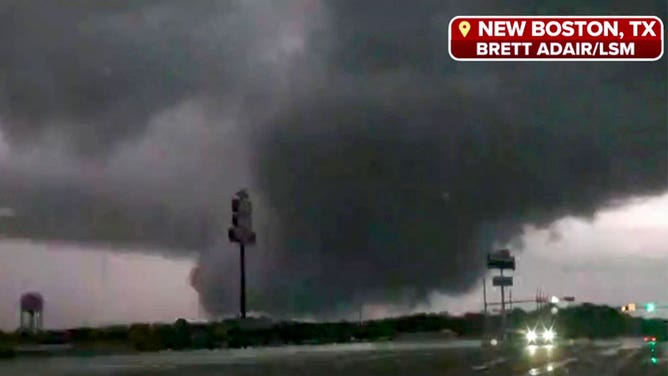
Lightning illuminates a tornado indicated by radar near New Boston, Texas, on Nov. 4, 2022.
(Brett Adair / LSM / FOX Weather)
According to the study, many reasons help explain why nighttime tornadoes are particularly deadly.
One reason for this is that tornadoes are typically unable to be seen in the dark unless the sky is lit up by frequent lightning.
WHY TORNADO ALLEY IS SHIFTING EAST
Because of this poor visibility at night, fewer storm spotters will be out to chase storms. Storm spotters notify the National Weather Service of tornadoes on the ground – but if the spotters cannot see them, they cannot report them.
Nighttime also means residents are more likely to be asleep during a storm. This causes residents to be unaware of a nighttime tornado and be caught off-guard.
Nighttime tornado in Texas illuminated by lightning
A tornado near the town of New Boston, Texas, was illuminated by lightning Friday night.
How to prepare for nighttime tornadoes
To prepare for a nighttime tornado – and daytime, for that matter – consider the following steps.
Be aware of weather alerts
- Know the weather forecasts for your area to understand the timing and severity of your weather situation. Also, remain aware of the forecast, as it may change overnight.
- Watch for alerts on your mobile phone, which should be kept close and fully charged during severe weather. Download the FOX Weather app, which sends alerts about weather threats and broadcasts FOX Weather programming live.
Know the difference between weather alerts
- If a Tornado Watch is issued, you should prepare for tornadic weather. Pay close attention to the forecast.
- If a Tornado Warning is issued, it means a tornado is imminent or happening now, and you should immediately take shelter in your safe place.
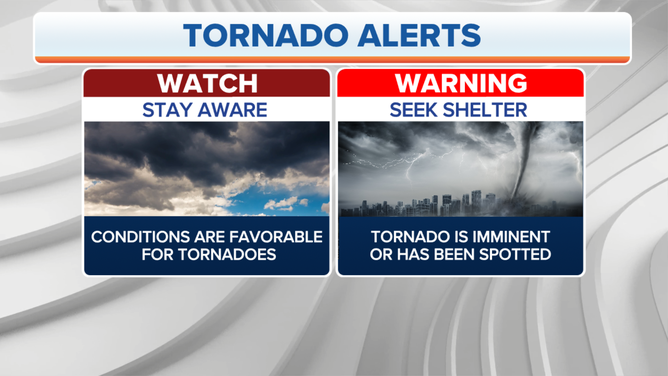
The difference between a Tornado Watch and a Tornado Warning.
(FOX Forecast Center / FOX Weather)
Where to find shelter in your home
Before a storm strikes, you should determine the safest place to be in your home in the event of a tornado and prepare your family accordingly.
Find a safe place and stay safe
- A safe place would be on the lowest level of your home, in the center of the floor and away from windows. You want to put as many walls between you and the tornado as possible. An interior closet or hall is best.
- If you live in a mobile home, you should leave well in advance and find a more sturdy building for shelter. If no shelter is nearby, the safest place is in a ditch or culvert.
- Don’t forget to cover your head. Something like a helmet is best, but anything that can be used to protect your head from flying debris will work.
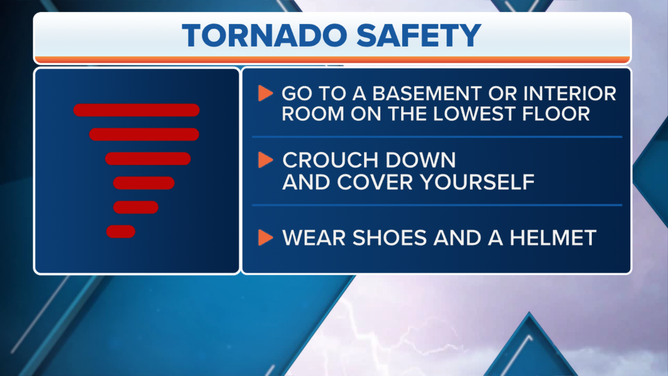
Tornado Safety Tips.
(FOX Forecast Center / FOX Weather)
Check your emergency supplies
- Keep at least a three-day food and water supply in an emergency, such as losing power and water during a tornado outbreak.
- Other emergency supplies should also include a first aid kit, flashlights, batteries and a whistle to signal for help.
- Keep important documents such as birth certificates, titles, Social Security cards and insurance documents should be kept in a fire-proof and waterproof safe.
How to build an emergency kit
Here are some tips to help you build the best emergency kit possible so that you're prepared for any natural disaster.
